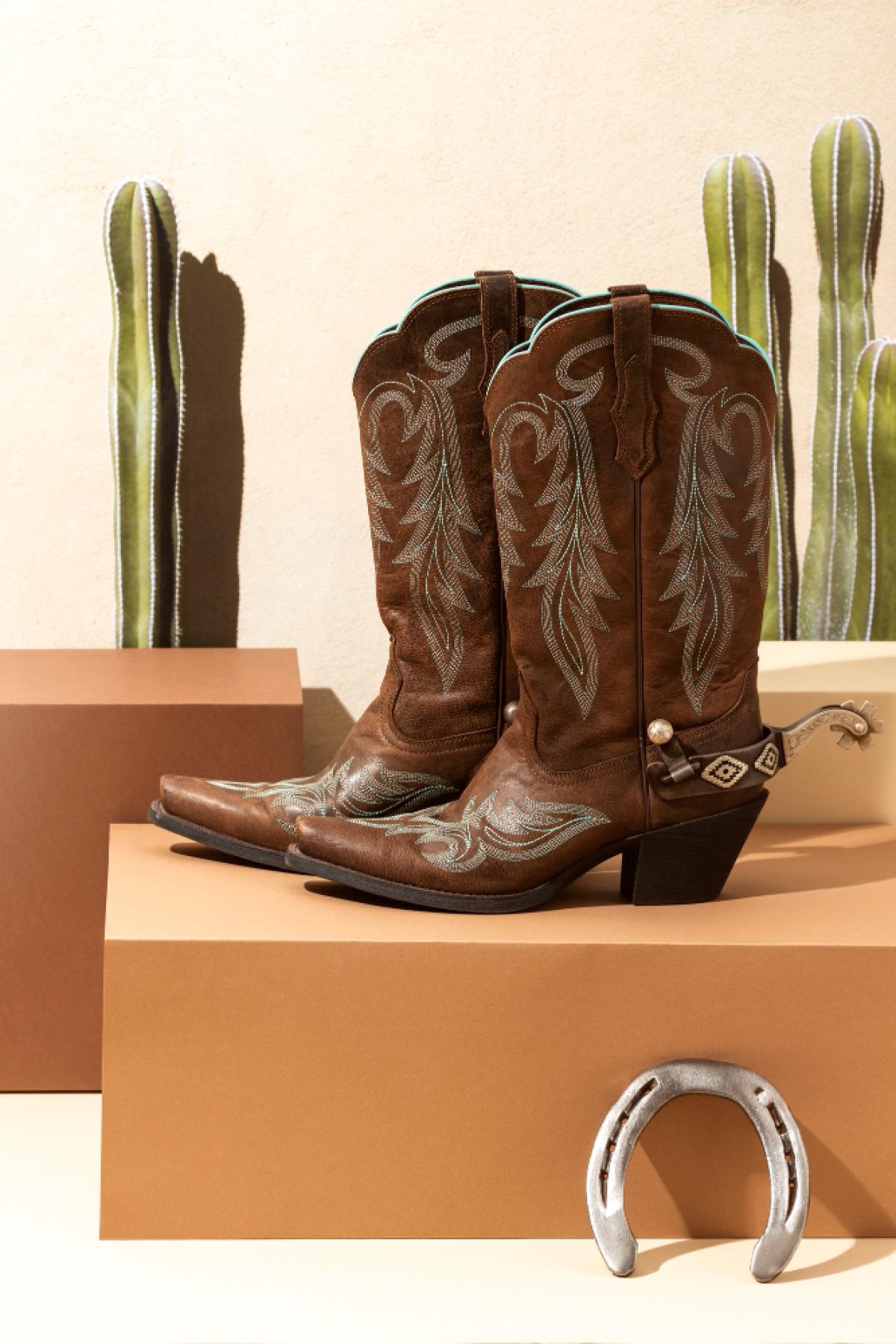Boots: Essential Gear or Fashion Statement?
Equipment or fashion piece? I know that boots have long transcended their original function as footwear and protection for the feet during work in the field. From the field, they transitioned to sports, which spread them to festive trends, fashion, and style at major equestrian and rural events. It is the world of show jumping, rodeo, and skill competitions that dictate fashion. The country style has left the field and made its way to the runway and the stages of life with country singers.

I know that boots have long since transcended their original function as footwear and protection for the feet while working in the fields.
From the field, they moved into sports, which propagated them into the festive wave of fashion and style at major equestrian and rural events. It is the world of horseback riding, rodeos, and skill competitions that dictate fashion. The country style has left the fields and made its way onto runways and stages of life with country singers.
In daily life, regardless of the wide variety of models, styles, and materials, they continue to maintain their primary original function – PROTECTION.
See what I wrote about boots in my book – TRAVELING ON HORSEBACK: A STEP-BY-STEP GUIDE.
BOOTS – are personal protective equipment, even though they often appear to be a fashion item of clothing.
It is very important to wear appropriate shoes while handling or riding a horse.
A good pair of boots should protect the feet from blunt objects and being stepped on, and prevent them from slipping through the stirrup.
For this, they cannot be made from weak materials; they must have a non-slip sole and a heel between 2.5 and 3.5 centimeters.
Riding boots differ in:
MATERIAL – they are made from various materials: natural leather, canvas, and synthetics. They differ in comfort, durability, and maintenance requirements.
STYLE
WESTERN – has a high, narrow heel. The front part is slightly pointed and sometimes features a metal tip. The sole is traditionally made of leather rather than rubber. They do not have laces or closures. Frequently, they come with buckles and other adornments. They can be knee-high or ankle-high. They are also found with heights up to mid-calf, but this is more of a fashion style than practical ownership, as they do not provide all the necessary protection and hinder the use of chaps.
ENGLISH – this style includes various models used in equestrian practice during competitions and leisure moments. In equestrian tourism, the English style boots used are those with a low and square heel. The front part is rounded. They have leather or rubber soles, soft and with slight grip. When knee-high, they have a closure at the back along the entire leg or a front lace over the instep. Short boots, ankle-high, are called Paddock when they have front laces; or Jodhpurs when they have a zipper on the instep; and Chelsea when they have elastic on both sides of the boots.
SHIN HEIGHT
LONG – available in various materials and styles, long boots are widely used for offering safety and protection. In some activities that require greater ankle flexibility, their use is more limited. And, when traveling, due to their larger volume and need for proper storage, they are often also set aside. They are used with various types of pants, but fit best with chaps, Jodhpurs, and Breeches.
SHORT – very versatile within a range of activities. They offer the lightness and flexibility needed in many equestrian practices. Their size is very welcome when packing belongings for moving along trails. However, they do not offer the same level of protection as long boots and, therefore, are frequently used in conjunction with chaps. They can be combined with a wide variety of pants, with no restrictions, except for Breeches.
HEEL HEIGHT – is only important in preventing the foot from slipping through the stirrup and should be at least between 2.5 and 3.5 centimeters. There are already types of stirrups on the market with mechanisms that prevent this kind of incident. Traditionally, stirrups were closed at the front with leather artifacts, tapaderos, which served the same purpose.
SOLE TYPE – soft soles with some grip are recommended. Completely smooth soles facilitate the foot's passage through the stirrup when mounting and dismounting. However, on the other hand, they make slipping completely through it easier, especially in boots with very low heels. Furthermore, during trails, there are often times when it is necessary to dismount to cross more difficult stretches or to relieve the horse during longer journeys; and this type of very smooth sole hinders walking on such terrain due to the complete lack of grip.
CLOSURE TYPE – some boots have no type of closure, like Western-style boots. Therefore, they must be quite fitted so as not to hinder putting on and taking off. Others have zippers at the back, on the side, or even at the front. Some have laces at the front. The choice is based on comfort and ease of use.
When choosing the type of boot to take on a horseback trip, the most important thing is that it is not new, that it is yours, that it is lightweight, that it has the appropriate heel and sole, and that it is not too wide for the stirrups.
Think about comfort, but above all, safety.
And because of this, despite being logical, it is worth mentioning that some types of shoes are not recommended and should be kept far away from this activity. Such is the case with espadrilles, very high-heeled boots, sandals, clogs, garden rubber shoes, sneakers, and running shoes.
Heavy climbing boots and combat boots are also not suitable.


